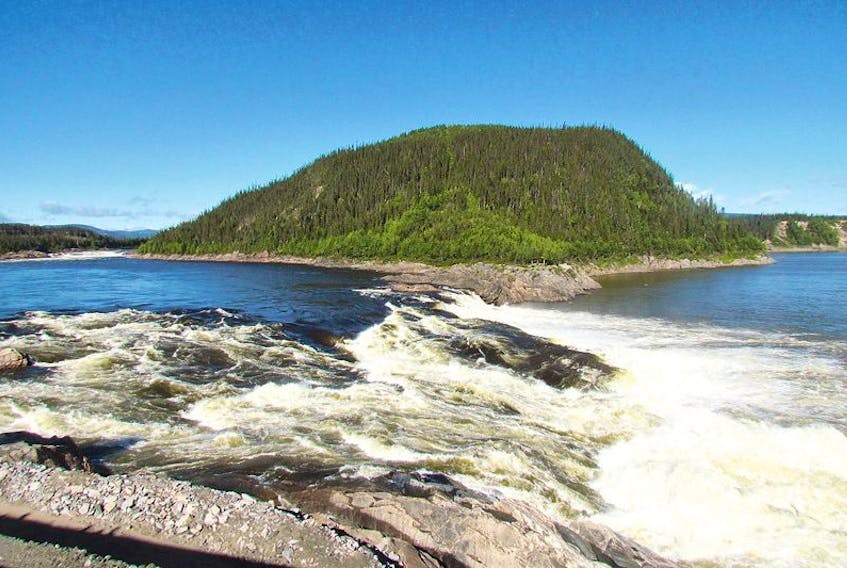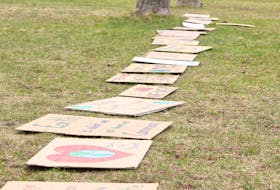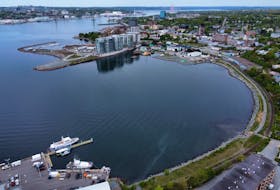“Lied” is a harsh word.
But I think that a truly remarkable set of money-saving “coincidences” shows that the provincial government made promises to Indigenous groups in Labrador that no one was actually making any real effort to keep.

This past week, to stick to its current schedule, Nalcor Energy started impounding water behind the dam at the Muskrat Falls hydroelectric project. The stored water puts a final and permanent halt to any chance of mediation measures like wetland capping to prevent the release of methylmercury.
But that’s just one example of the unfulfilled promises.
In October 2016, the provincial government agreed that, “Following initial impoundment, Nalcor will release water from the reservoir in the spring of 2017 to its natural flow, as ordered by the Government of Newfoundland and Labrador. This will facilitate the opportunity for additional mitigation measures, which may include clearing trees, vegetation and/or soil from the reservoir.”
But that spring release became late July so that Nalcor could stay on its schedule and finish installing key equipment.
Shortly after the water release started, a different reality arrived. This is from a Nalcor stakeholders’ update: “Understanding the commitment made to Indigenous groups, in spring/summer 2017 we sought further engineering assistance as to how best to undertake the reduction in water levels. Keeping safety top‐of‐mind we undertook this work and lowered water levels in the Muskrat Falls reservoir from 22.5 m to 20.3 m. The average water level in the reservoir during spring conditions is about 20.0 metres. While lowering water levels, regular inspections were undertaken. During some aerial surveys, engineers expressed concerns about the erosion of some of the banks upstream of the facility. In the interest of public safety, we did not reduce water levels beyond 20.3 m.”
By September, water levels were being increased again.
And that’s the way it would stay.
In a February 2018 update, Nalcor was pointing out that, “lowering the water level in the reservoir upstream of Muskrat Falls could actually reduce the upstream river bank stability. By lowering the water levels, this would reduce the water pressure against the saturated river banks upstream of Muskrat Falls, which could decrease the stability of the banks and therefore increase the possibility of a landslide along the banks within the reservoir.”
Then, there’s wetland capping. The province had said that wetland areas would be capped before full impoundment to prevent the release of methylmercury. But the same government somehow forgot to approve a permit to do the work in time to actually get it done.
“It was my intention to do wetland capping,” Premier Dwight Ball told the Muskrat Falls Inquiry.
But when the permit wasn’t acted upon, the work vanished.
“That construction window is no longer available to us,” Nalcor Energy’s Gilbert Bennett wrote in January.
Eventually, years into the future, unsealed cabinet records will show whether the provincial government was acting in good faith …
This is from Bennett again: “From a construction perspective, we need to maintain the impoundment schedule and impound as early as possible to complete the spillway concrete placement and to permit commissioning activities for Unit 1 in advance of first power this year.”
It’s interesting that, while everyone was preparing to do reservoir work, Nalcor was actually holding costs off the project’s balance sheet. An oversight committee report talks about the way costs are “Quantified, but not included in the June 2017 Project Capital Budget.”
Eventually, years into the future, unsealed cabinet records will show whether the provincial government was acting in good faith when it made promises to end the original Labrador Water Keepers occupation of part of the Muskrat Falls site.
All you can clearly say right now is that, if there was a conflict between promises to Indigenous groups and Nalcor’s scheduling needs, Nalcor’s schedule regularly won out. I don’t think that’s accidental.
Promises? It’s all water behind the dam now.
Russell Wangersky’s column appears in 36 SaltWire newspapers and websites in Atlantic Canada. He can be reached at [email protected] — Twitter: @wangersky.
MORE FROM RUSSELL WANGERSKY









